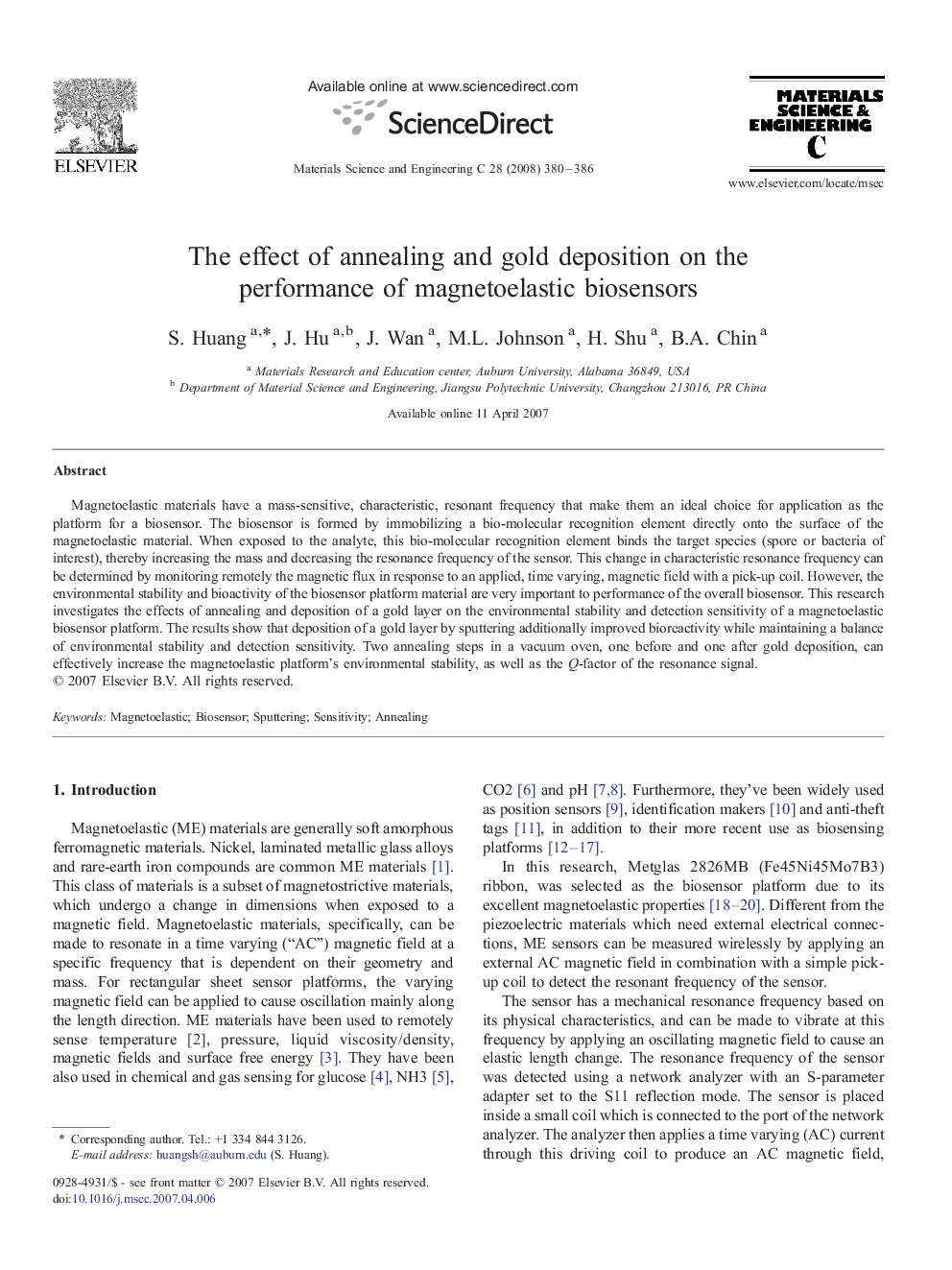| کد مقاله | کد نشریه | سال انتشار | مقاله انگلیسی | نسخه تمام متن |
|---|---|---|---|---|
| 1431205 | 987227 | 2008 | 7 صفحه PDF | دانلود رایگان |

Magnetoelastic materials have a mass-sensitive, characteristic, resonant frequency that make them an ideal choice for application as the platform for a biosensor. The biosensor is formed by immobilizing a bio-molecular recognition element directly onto the surface of the magnetoelastic material. When exposed to the analyte, this bio-molecular recognition element binds the target species (spore or bacteria of interest), thereby increasing the mass and decreasing the resonance frequency of the sensor. This change in characteristic resonance frequency can be determined by monitoring remotely the magnetic flux in response to an applied, time varying, magnetic field with a pick-up coil. However, the environmental stability and bioactivity of the biosensor platform material are very important to performance of the overall biosensor. This research investigates the effects of annealing and deposition of a gold layer on the environmental stability and detection sensitivity of a magnetoelastic biosensor platform. The results show that deposition of a gold layer by sputtering additionally improved bioreactivity while maintaining a balance of environmental stability and detection sensitivity. Two annealing steps in a vacuum oven, one before and one after gold deposition, can effectively increase the magnetoelastic platform's environmental stability, as well as the Q-factor of the resonance signal.
Journal: Materials Science and Engineering: C - Volume 28, Issue 3, 1 April 2008, Pages 380–386